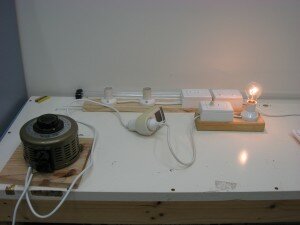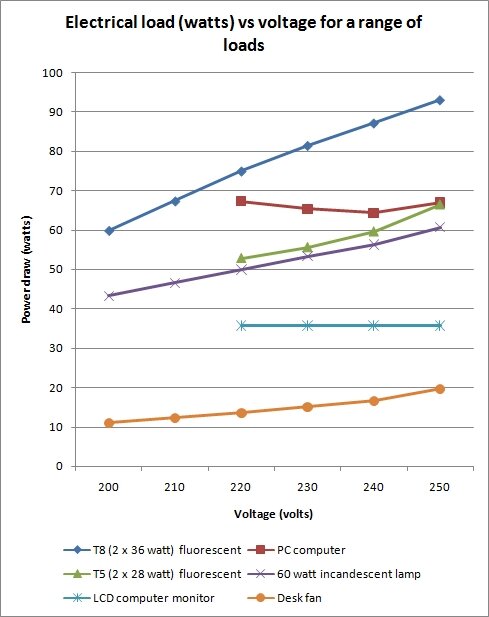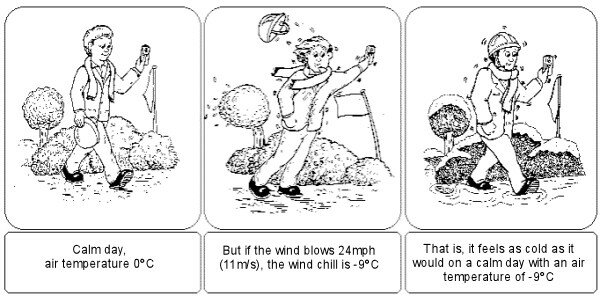Voltage reduction could save 15 million tonnes of greenhouse gas – part 2
Monday, July 13th, 2009A few months ago I wrote a blog posting about how tighter regulation of electricity supply voltages could save Australia 15 million tonnes of greenhouse gas a year.
However a comment on that posting suggested that voltage reduction may not result in any useful savings.
Below I report on the results of an experiment we undertook to identify how much power can be saved, if any, by operating equipment at a lower voltage.
We measured a variety of single phase loads at different voltages. A variable transformer was used to vary the voltage. A German made Power Tech plus plug in power meter was used to measure voltage, current, power and power factor at the different loads. Loads experimented with included typical single phase lights, computer equipment and a fan.
The experimental set up is shown above. Below is a graph showing the results of the testing.
This graph clearly shows that for common lighting loads power consumption decreases with decreased voltage
- Incandescent lamp (resistive load)
- T8 fluorescent (inductive load)
- T5 fluorescent (electronic ballast)
The reduction in power consumption with the T5 fluorescent (with an electronic ballast) was unexpected.
The fan, with a single phase (shaded pole?) motor, also used less power with lower voltage, interestingly the power factor improved as voltage was lowered, with the power factor the highest at 220 volts.
The PC computer and monitor both showed lowest power consumption at 230 and 240 volts, but power consumption generally did not decrease with voltage. Power factor improved a little at lower voltages.
This experiment shows that for a variety of loads power consumption is in fact less at lower voltage.
For heating or cooling loads equipment may need to run longer when at lowered voltage to reduce the same amount of heating or cooling, with no net energy savings.
Three phase synchronous motors are unlikely to use any more or less power (a theoretical assertion, we don’t have the equipment to test), having the motors run at 230 volts rather than 240 or 250 volts however is unlikely to cause motor damage due to excess current as the voltage difference is only small.
But with lighting and many single phase motors power consumption drops with lowered voltage.
My back of the envelope calculations still come up with a saving of around 15 million tonnes of greenhouse gas if voltages were closer to the 230 volt standard rather than being at 240 to 250 volts.
If high voltage drops in distribution were a problem additional network infrastructure could be used to deliver a more consistent voltage across the network. 2009 is the year of the “smart grid.” A smart grid could mean multitap transformers that can be changed on the fly to deliver a more consistent 230 volts across the whole electrical network.







